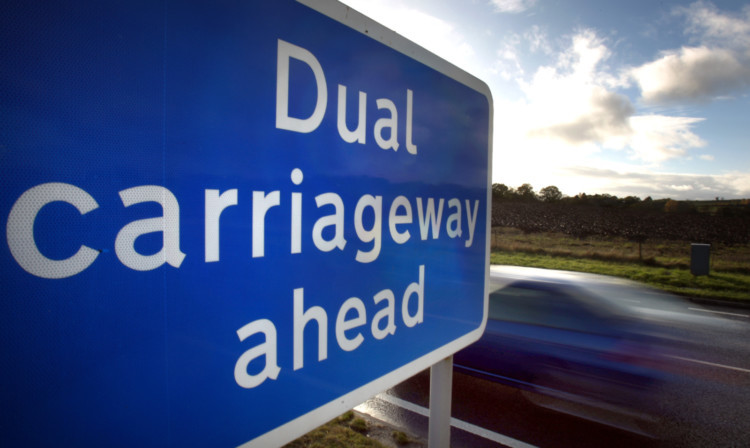Three stretches of the A9 will be dualled ahead of schedule, transport minister Keith Brown announced today.
As The Courier revealed this morning, adjustment to how the work is being carried out means smaller sections of the carriageway will be completed faster than originally predicted.
Instead of working on nine stretches, the work has been broken down into 12 sections to speed up parts of the process so there is less disruption for motorists.
With work on the 7.5km stretch between Kincraig and Dalraddy already due to start in 2015/16, Mr Brown confirmed that sections of the dualling programme expected to be shovel ready in 2017 are the 10.5km Pitagowan to Glen Garry, the 8.3km Dalwhinnie to Crubenmore, and 9.3km Tomatin to Moy stretches.
There are also new draft proposals for one of the busiest sections of the A9 the 9.5km stretch between Luncarty to Pass of Birnam.
Mr Brown said:“This is the first time any government has committed to dualling the A9 between Perth and Inverness the biggest transport project, by cost, in Scotland’s history and the challenging programme of work remains on schedule for completion by 2025.
“We have pledged to bring forward elements of the scheme wherever we can and we are delivering on that.”
He added: “We have some 132km of road to be dualled between Perth and Inverness and these schemes, along with the 7.5km Kincraig-Dalraddy stretch, helps to meet our pledge to complete over half of the entire upgrading by 2022.”
Project chiefs say they have also listened to concerns from communities about the route of the planned changes.
Mr Brown said: “To remove any uncertainty for local communities, we have also recommended that the whole dualling programme should follow a 200 metre-wide corridor along the existing route of the A9 rather than introduce any new road alignments, and we will consult on the new route options to hear views and get a local perspective as we develop the programme of works.”
Don McKee, the Cairngorms National Park Authority’s head of major projects, said:“Fitting landscapes” is a very welcome policy that fits well with the aims of the Cairngorms National Park. We are pleased to see the integrated approach that requires high-quality landscape design together with wildlife conservation in establishing the highest quality for our road infrastructure.
“We are also very pleased to see it being applied to the planning of the A9 dualling programme to make this road a positive contribution to some of Scotland’s most valued landscapes.”
Nick Halfhide, head of operations at Scottish Natural Heritage (SNH), added:“The A9 passes through many sensitive areas for wildlife and their habitats, which will clearly need to be taken into account in the dualling project. The road also passes through some outstanding landscape and it’s important that motorists are able to appreciate this as part of their journey.
“Dualling the road will therefore present some significant environmental challenges. We welcome Transport Scotland’s approach in applying the Fitting Landscapes principles in the early stages of design and planning. This will help put measures in place to minimise impacts on nature and landscape.”
There have been around 100 deaths along the Perth to Inverness section of the road in the past eight years. It is currently covered by mobile speed camera vans and police cars.
That led to Professor Donald Macleod, a former principal of Free Church College in Edinburgh, last year describing the A9 death toll as “a shame to the nation”.
